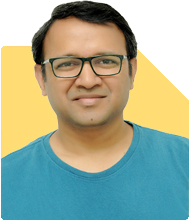Hi my age is 41 & my monthly salary of 1.75 laks. I have home loan balance of 6 laks & monthly EMI of 12500. Personal loan is 4.8 laks 8 & monthly EMI of 18000. My current savings from PF 15 laks, life insurance 14 laks & all 5 yrs are tenure paid. MF savings of 26 laks & monthly SIP 45k past 3.5 years.
Currently 2.5 laks yearly premiums of LIC life insurance & balance 12 yrs premium is pending. Term insurance value 1.5 crore & monthly EMI of 4400. My standard monthly expenses are 10 k for my parents, kids education fee 2 laks per year, mothy expenses for house hold 30 to 45k.i need plan for early retirement approx 55, kids Higher study & retirement value of 1 laks. Kindly advise financial planning for my case.
Ans: You are doing many things right. Your savings and SIP habits are impressive. You are focused on early retirement and kids’ education. That’s excellent foresight. With careful planning, your goals are achievable. Let’s now assess and structure your financial plan.
» Income and Current Outflow Summary
– Your monthly salary is Rs.1.75 lakhs.
– EMI towards home loan is Rs.12,500.
– Personal loan EMI is Rs.18,000.
– Term plan premium is Rs.4,400.
– LIC policy premium is around Rs.20,800 monthly (Rs.2.5 lakhs yearly).
– SIP is Rs.45,000 monthly.
– Household and family expenses are Rs.30,000 to Rs.45,000.
– You support your parents with Rs.10,000 per month.
– Kids’ education cost is Rs.2 lakhs yearly (Rs.16,000 monthly approx).
Your total fixed outgo monthly is approx Rs.1.36 lakhs to Rs.1.52 lakhs.
You are left with very little buffer each month.
This needs re-balancing.
» Assessment of Existing Assets
– PF corpus of Rs.15 lakhs is a strong base.
– Life insurance value of Rs.14 lakhs with premiums due for 12 more years.
– Mutual Fund value of Rs.26 lakhs is excellent.
– SIP of Rs.45,000 running for 3.5 years shows consistency.
– Term insurance of Rs.1.5 crore is apt for your age.
Your total assets are around Rs.55 lakhs.
But part of this is locked or low-yielding.
This needs attention and action.
» Evaluation of Loans
– Home loan balance is Rs.6 lakhs. EMI is manageable.
– Personal loan of Rs.4.8 lakhs with Rs.18,000 EMI is high.
– Personal loans are high-cost and reduce investible surplus.
– Try to prepay personal loan first, not the home loan.
– Use any bonuses or extra funds to close personal loan early.
Reducing personal loan burden improves your cash flow and peace of mind.
» Review of Insurance Policies
– You are paying Rs.2.5 lakhs yearly for LIC life insurance.
– These are traditional plans, likely with low returns.
– 12 years premium still left. That’s Rs.30 lakhs more over time.
– Maturity after 17 years may not beat inflation.
You may surrender these LIC policies.
Reinvest the surrender value into mutual funds.
This will improve your returns and liquidity.
Focus only on your term plan for life cover.
» Term Insurance – A Right Step
– Rs.1.5 crore term insurance is a strong coverage.
– You are paying Rs.4,400 monthly, which is reasonable.
– This must be continued till retirement.
– It protects your family in case of uncertainty.
Avoid mixing insurance and investment.
You have taken the correct approach here.
» Mutual Funds – Your Strongest Wealth Generator
– MF corpus of Rs.26 lakhs is your growth engine.
– Rs.45,000 monthly SIP is highly disciplined.
– You’ve invested for 3.5 years. That’s great consistency.
Continue SIP till retirement or longer.
If needed, reduce SIP slightly till loan is cleared.
Avoid index funds as they lack professional oversight.
Actively managed funds outperform in volatile Indian markets.
They help you beat inflation and stay ahead.
Also, direct funds don’t suit everyone.
Regular funds through a CFP-guided MFD offer better strategy.
They give personalised rebalancing, tax planning, and behaviour management.
This helps avoid panic in market swings.
Stay committed to MF investing with guidance.
It will build your retirement and kids’ education corpus.
» Retirement Planning Target
– You wish to retire by 55. That’s 14 years away.
– Your target post-retirement income is Rs.1 lakh per month.
– Adjusting for inflation, this will need a larger corpus.
Your PF, SIP, and future investments will help.
You must maintain or increase SIP over time.
Reduce personal loan burden first, then increase SIP.
Avoid withdrawing PF before 60. Let it compound.
Stay consistent and increase SIP with every salary hike.
This ensures a smoother retirement journey.
» Kids’ Higher Education Planning
– You have two kids. Education cost is rising fast.
– You are already paying Rs.2 lakhs per year for schooling.
– Higher studies may need Rs.20-30 lakhs per child later.
You must earmark part of SIP for this goal.
Start a separate SIP only for kids’ future.
Choose growth-oriented diversified equity funds.
Invest with at least a 10-12 year view.
Do not use insurance policies for education planning.
Mutual funds offer better growth and liquidity.
Review this goal every year. Adjust SIP if needed.
» Monthly Budget and Cash Flow Advice
– Your monthly income is Rs.1.75 lakhs.
– Fixed expenses and EMIs are very close to this amount.
– You are under financial pressure every month.
Prioritise expenses now:
Prepay personal loan first
Slightly reduce SIP for 12-18 months if needed
Review LIC policies and surrender if practical
Avoid any new loans
Don’t increase lifestyle expenses suddenly
Use bonuses or incentives wisely.
Keep emergency fund of Rs.3-5 lakhs in liquid mutual funds.
» Income Protection and Contingency Planning
– You have good term cover. That’s sufficient for now.
– Do you have personal health insurance apart from company policy?
– If not, take a separate family floater policy.
Company health cover stops after retirement.
Private cover ensures long-term protection.
Choose a plan with room for top-up later.
Also, build a medical corpus alongside insurance.
Medical inflation is very high in India.
» Action Plan for LIC & Other Low-Yield Products
– You hold LIC traditional life insurance plans.
– These give low returns, often below inflation.
– They also lock your money for a long term.
Since your premiums are still due for 12 more years:
Check surrender value
Stop paying further if break-even is poor
Reinvest the amount into mutual funds through a CFP
This boosts flexibility and return potential
Keep only the term plan as your life cover
This restructuring will increase your wealth creation capacity.
» Taxation Considerations
– Be aware of new mutual fund taxation:
– Equity MF: LTCG above Rs.1.25 lakh taxed at 12.5%
– STCG taxed at 20%
– Debt MF: Gains taxed as per your income slab
Plan redemptions accordingly to save taxes.
Use systematic withdrawals post-retirement for regular income.
Avoid selling funds in bulk to reduce tax liability.
You must factor this in when planning kids' education withdrawals.
» Avoid Real Estate and Annuity Products
– You already have a home loan. Don’t invest more in property.
– Real estate is illiquid and low yielding.
– Also avoid annuity products. They lock your money at low returns.
Stick with mutual funds and debt hybrids.
They are more flexible and tax-efficient.
» Investment Strategy Moving Forward
Continue SIP without break
Separate SIP for retirement and kids
Avoid traditional insurance plans
Don’t mix insurance and investment
Use bonuses to clear personal loan
Don’t increase home loan EMI
Increase SIP after loan closure
Build emergency corpus
Maintain health insurance
Review financial plan every 12 months
Consult a Certified Financial Planner regularly
This structure will balance current needs and future goals.
» Finally
You are already on the right path.
Your SIP habit and PF corpus are strong.
Just trim the low-return policies.
Restructure loans and expenses carefully.
Continue your discipline.
Make small adjustments every year.
Use MFD services with CFP guidance for your mutual fund planning.
That helps in fund selection, reviews, tax strategy, and rebalancing.
With consistency and guidance, your retirement by 55 is reachable.
Your kids' education goals also look realistic.
Stay focused and review yearly.
That’s the key to long-term financial peace.
Best Regards,
K. Ramalingam, MBA, CFP,
Chief Financial Planner,
www.holisticinvestment.in
https://www.youtube.com/@HolisticInvestment























